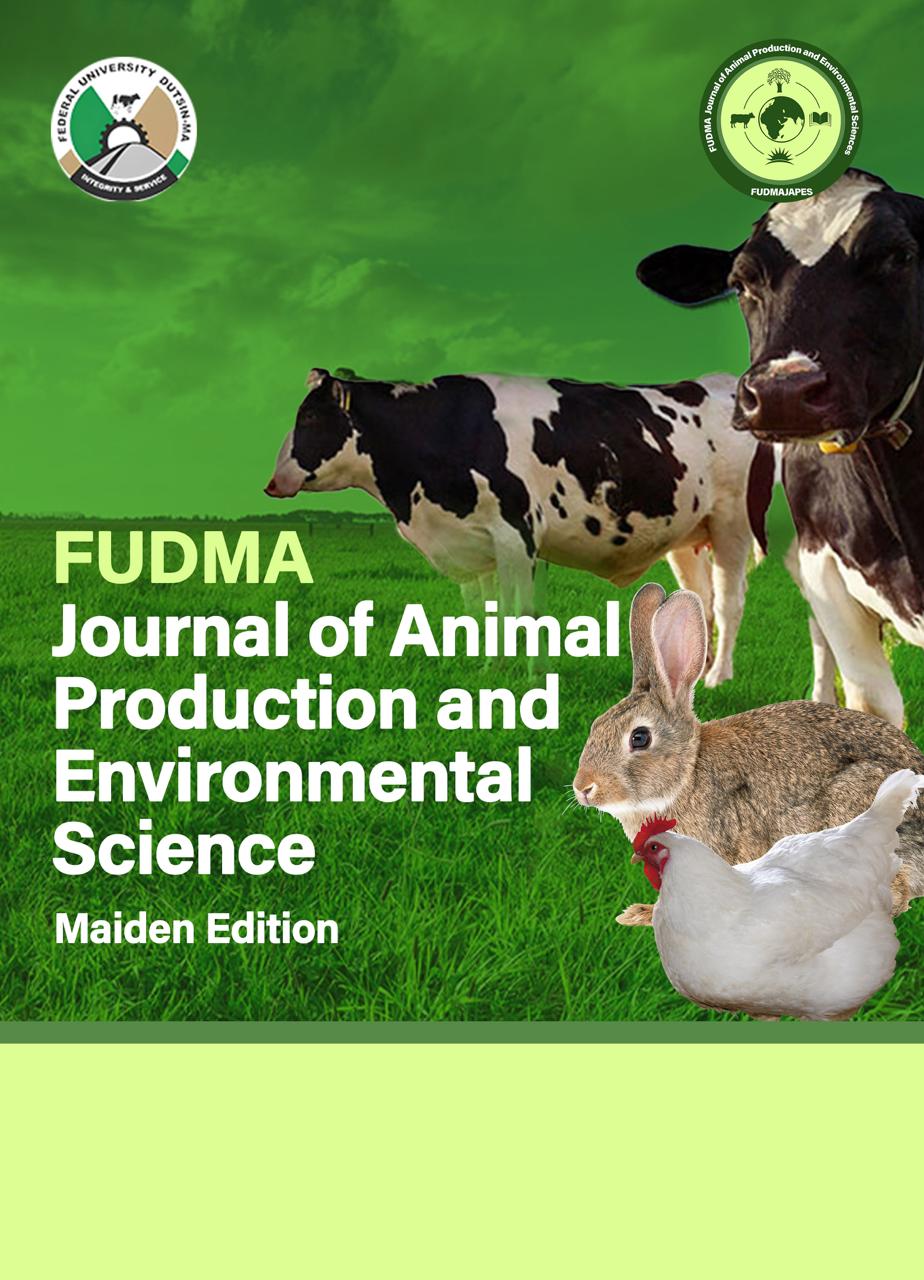OCCURENCE AND RISK FACTORS OF TUBERCULOSIS IN CAMELS IN KANO, KATSINA AND JIGAWA STATES, NIGERIA
DOI:
https://doi.org/10.33003/japes.2025.v1i1.77-81Keywords:
Camels, tuberculosis, Occurrence, lateral flow assayAbstract
The study was aimed at determining the prevalence as well as risk factors of Mycobacterial infections in camels in three northwestern States. Three hundred and eighty four blood samples were collected from camel herds and another 384 from camels presented for slaughter at abattoirs in three States of Kano, Katsina and Jigawa to obtain sera which were used to determine the presence of antibodies to tuberculosis using lateral flow assay test. Three hundred and eighty four camels were sampled at slaughter at the central abattoirs in the three States for tuberculous lesions. The results revealed a total occurrence rate of 8.98% for presence of antibodies to TB in sera and a total occurrence rate of 5.98% based on occurrence of tuberculous lesions in camels in the study area. There was no significant difference (ρ≤0.05) in occurrence across study States via lateral flow or occurrence of lesions though Katsina State recorded a numerically higher occurrence of 11.26% and 11.46% than Kano (8.97%; 3.49%) or Jigawa (7.03%, 6.78%) respectively. Occurrence by sex and age were not statistical significant (ρ≤0.05) as no difference was observed between bulls and cows or adults and young camels. However a significant difference (ρ=0.01) was observed in the occurrence of TB by body condition score with the highest occurrence in camels with poor body condition score. It was thus recommended that there is need for improved surveillance, monitoring and quarantine services especially at Border States to control trans-border movement of diseases such as tuberculosis into the country and also an urgent need for increased awareness amongst camel stakeholders of the dangers of zoonotic infections from consumption of untreated camel milk and products also bearing in mind the close proximity between camels and their owners/herders. It was also recommended that the National policy on tuberculosis control in humans should be reviewed to include animals, camels inclusive.






